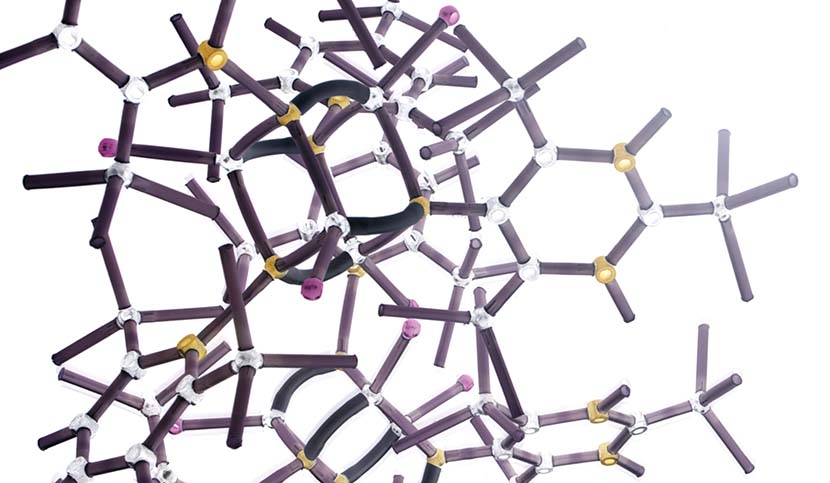A joint study by teams from the Paris Brain Institute at the Pitié-Salpêtrière hospital and from Inria (Rennes and Paris centers) has revealed for the first-time plasma microRNA signatures in individuals with or presymptomatic of fronto-temporal degeneration or amyotrophic lateral sclerosis. The discovery of this potential new biomarker, published in the Journal of Neurology, Neurosurgery and Psychiatry, represents an important step forward in assessing the clinical progression of patients and the efficacy of future treatment candidates in therapeutic trials.
Frontotemporal degeneration (FTD) and amyotrophic lateral sclerosis (ALS) are neurodegenerative diseases that may have a common genetic cause, the most common of which is a mutation in the c9orf72 gene. DFTs cause behavioural, language, and emotional control disorders and affect cognitive, reasoning, and judgment abilities. ALS, on the other hand, is a disease of the motor neurons leading to muscle weakness and progressive paralysis.
At present, there is no treatment for these two pathologies. The identification of specific markers of the progression of these pathologies is essential in order to best adapt patient management and evaluate the efficacy of treatment in clinical trials. To this end, the PREV-DEMALS* study, coordinated by Dr. Isabelle Le Ber, is following 22 patients with the c9orf72 mutation, 45 presymptomatic individuals with the mutation and 43 control subjects.
A specificity of these pathologies associated with the c9orf72 mutation is the presence of pathological inclusions consisting of the TDP-43 protein in the brain of patients. TDP-43 plays an important role in the formation of microRNAs (miRNAs), small fragments of genetic material that regulate gene expression. Could the formation of these inclusions in patients’ brains have an effect on miRNA synthesis?
The association of these miRNAs with many neurodegenerative diseases is increasingly suspected. The possibility of measuring their presence in blood plasma makes them all the more interesting as potential biomarkers of the evolution of these diseases.
A collaborative study** conducted by the teams of Isabelle Le Ber (AP-HP) and Olivier Colliot (CNRS, joint team with Inria Paris) at the Paris Brain Institute (Inserm/CNRS/Sorbonne University) and with Emmanuelle Becker at Inria Rennes (IRISA, Dyliss team), as part of Virgilio Kmetzsch’s thesis work, focused on miRNAs present in the plasma of subjects in the PREV-DEMALS cohort.
The researchers identified 4 miRNAs expressed differently between patients and control subjects. Two were over-expressed in patients, while two were under-expressed. One of the two over-expressed miRNAs, MiR-34a-5p, was also over-expressed in presymptomatic subjects, suggesting deregulation of this miRNA associated with the c9orf72 mutation. The second, miR-345-5p, was more expressed in patients compared to presymptomatic subjects, suggesting a correlation between disease progression and increased miRNA expression. The two under-expressed miRNAs were, however, associated with an already fully established pathology. In addition, 4 presymptomatic individuals near the clinical onset of the disease had miRNA expression levels very similar to those of the patients, also showing the value of this signature in determining the timing of clinical conversion.
Taken together, these results highlight for the first time a miRNA transcriptomic signature specific to the presymptomatic and symptomatic stage of FTD/ALS associated with a mutation in the C9orf72 gene. This signature could constitute an important biomarker in these diseases, in particular in the transition to the clinical phase. It could also be used for the initiation and monitoring of therapies administered at an early stage, as early as the presymptomatic phase.
* The PREV-DEMALS cohort is funded by ANR/DGOS PRTS and under AP-HP promotion. Patient follow-up is carried out at the Institute of Memory and Alzheimer’s Disease at the Pitié-Salpêtrière Hospital AP-HP and at the Clinical Investigation Center at the Paris Brain Institute.
** This research is conducted as part of the IPL Neuromarkers project, a large-scale collaboration between Inria and the Paris Brain Institute, whose objective is to develop new computational and statistical approaches for the prediction and study of the evolution of neurodegenerative diseases.
Source
Plasma microRNA signature in presymptomatic and symptomatic subjects with C9orf72-associated frontotemporal dementia and amyotrophic lateral sclerosis. Kmetzsch V. et al. Journal of Neurology, Neurosurgery and Psychiatry. 2020







